 W
WThe Sengoku period Battle of Anegawa occurred near Lake Biwa in Ōmi Province, Japan, between the allied forces of Oda Nobunaga and Tokugawa Ieyasu, against the combined forces of the Azai and Asakura clans. It is notable as the first battle that involved the alliance between Nobunaga and Ieyasu, liberated the Oda clan from its unbalanced alliance with the Azai, and saw Nobunaga's prodigious use of firearms.
 W
WThe Battle of Azukizaka or Battle of Batō-ga-hara took place in 1564, when Matsudaira Motoyasu, sought to destroy the growing threat of the Ikkō-ikki, a league of monks, samurai, and peasants who were strongly against samurai rule.
 W
WIn the First Battle of Azukizaka Oda Nobuhide defeated Imagawa Yoshimoto, setting the stage for his son, Oda Nobunaga, to become one of Japan's greatest warlords. Despite the defeat, later in 1548, Imagawa defeated Nobuhide in the Second Battle of Azukizaka and continued to expand his territory until 1560, when he faced Nobunaga and was killed in the Battle of Okehazama.
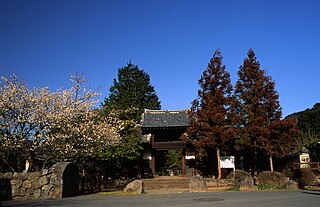 W
WTakeda Nobutora was a Japanese daimyō who controlled the Province of Kai, and fought in a number of battles of the Sengoku period.
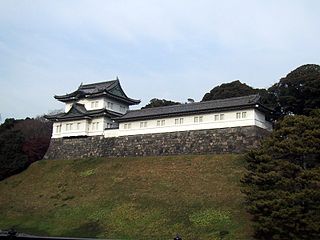 W
WIn the 1524 Siege of Edo, also known as the Battle of Takanawahara (高輪原の戦い), the Hōjō, led by Hōjō Ujitsuna, besieged Edo castle, which was held by Uesugi Tomooki. Though Edo has since become the Japanese metropolis of Tokyo, it was then a more or less insignificant fishing village in the Kantō region.
 W
WThe Honnō-ji Incident was the assassination of Oda Nobunaga at the Honnō-ji temple in Kyoto on 21 June 1582. Nobunaga was betrayed by his general Akechi Mitsuhide during his campaign to consolidate centralized power in Japan under his authority. Mitsuhide ambushed the unprotected Nobunaga at Honnō-ji and his eldest son Oda Nobutada at Nijō Palace which resulted in both committing seppuku. Nobunaga was avenged by his retainer Toyotomi Hideyoshi who defeated Mitsuhide in the Battle of Yamazaki, paving the way for Hideyoshi's supremacy over Japan.
 W
WThe Siege of Inabayama Castle of 1567 was the final battle in Oda Nobunaga's campaign to defeat the Saitō clan in their mountaintop castle and conquer Mino Province, Japan.
 W
WThe Ishiyama Hongan-ji War , taking place from 1570 to 1580 in Sengoku period Japan, was a ten-year campaign by lord Oda Nobunaga against a network of fortifications, temples, and communities belonging to the Ikkō-ikki, a powerful faction of Jōdo Shinshū Buddhist monks and peasants opposed to the rule of the samurai class. It centered on attempts to take down the Ikki's central base, the cathedral fortress of Ishiyama Hongan-ji, in what is today the city of Osaka. While Nobunaga and his allies led attacks on Ikki communities and fortifications in the nearby provinces, weakening the Hongan-ji's support structure, elements of his army remained camped outside the Hongan-ji, blocking supplies to the fortress and serving as scouts.
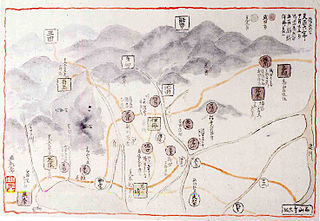 W
WThe second siege of Itami Castle (伊丹城の戦い), also called the siege of Arioka Castle (有岡城の戦い) during the Sengoku period of Japanese history, occurred in 1579, five years after it was seized by Oda Nobunaga from a lord named Itami, and entrusted to Araki Murashige.
 W
WThe Kaga Rebellion or Chōkyō Uprising was a large-scale revolt in Kaga Province, Japan, in late 1487 through 1488. Togashi Masachika, who ruled Kaga Province as shugo, had been restored to power in 1473 with aid from the Asakura clan as well as the Ikkō-ikki, a loose collection of lesser nobility, monks, and farmers. By 1474, however, the Ikkō-ikki grew discontent with Masachika, and launched some initial revolts, which were easily quelled. In 1487, when Masachika left on a military campaign, between 100,000 and 200,000 Ikkō-ikki revolted. Masachika returned with his army, but the Ikkō-ikki, backed by several disaffected vassal families, overwhelmed his army and surrounded him in his palace, where he committed seppuku. The former vassals of Masachika granted the position of shugo to Masachika's uncle Yasutaka, but over the next several decades, the Ikkō-ikki increased their political hold on the province, which they would effectively control for almost a century.
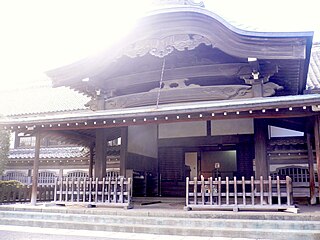 W
WThe 1545–1546 Siege of Kawagoe Castle was part of a failed attempt by the Uesugi clan to regain Kawagoe Castle from the Later Hōjō clan in the Sengoku period of Japan. Uesugi Tomosada of the Ogigayatsu branch of the Uesugi clan was joined by his more powerful relative Uesugi Norimasa, by Ashikaga Haruuji, the Kantō kubō in Koga, and by a host of anti-Hōjō daimyō from the Kantō region.
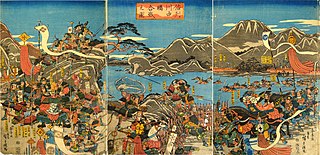 W
WThe Battles of Kawanakajima were a series of battles fought in the Sengoku period of Japan between Takeda Shingen of Kai Province and Uesugi Kenshin of Echigo Province from 1553 to 1564.
 W
WThe Battle of Komaki and Nagakute was a series of battles in 1584 between the forces of Hashiba Hideyoshi and the forces of Oda Nobukatsu and Tokugawa Ieyasu. Hideyoshi and Ieyasu had both served Oda Nobunaga and had not previously come into conflict; this would in fact be their only period of enmity. Although this episode of history is most commonly known by the two largest and most important battles, the event is also sometimes referred to as the Komaki Campaign. The site of the Battle of Komaki and Nagakute was designated a National Historic Site of Japan in 1939. The designation includes Mount Mihata (御旗山), Mount Irogane (色金山), and the head mound (首塚)
 W
WThe Kunohe Rebellion was a rebellion of the Sengoku period of Japan that occurred in Mutsu Province from 13 March to 4 September 1591.
 W
WThe Kyūshū campaign of 1586–1587 was part of the campaigns of Toyotomi Hideyoshi who sought to dominate Japan at the end of the Sengoku period. Having subjugated much of Honshū and Shikoku, Hideyoshi turned his attention to the southernmost of the main Japanese islands, Kyūshū, in 1587.
 W
WThe Battle of Mikatagahara was a battle of the Sengoku period of Japan fought between Takeda Shingen and Tokugawa Ieyasu in Mikatagahara, Tōtōmi Province on 25 January 1573.
 W
WThe siege of Miki (三木合戦) lasted from 1578 to 1580. Toyotomi Hideyoshi took Miki Castle of Harima Province, located in what is now Miki, Hyōgo, Japan, from Bessho Nagaharu, an ally of the Mōri clan.
 W
WThe battle of Mimasetōge (三増峠の戦い) took place in 1569, as the forces of Takeda Shingen withdrew from repeated failed sieges of the Hōjō clan's Odawara Castle in the Kanagawa Prefecture of Japan.
 W
WThe 1555 Battle of Miyajima was the only battle to be fought on the sacred island of Miyajima; the entire island is considered to be a Shinto shrine, and no birth or death is allowed on the island. Extensive purification rituals took place after the battle, to cleanse the shrine and the island of the pollution of death.
 W
WThe Siege of Moji was a siege in 1561 against the castle of Moji in Japan. The castle belonged to the Mōri clan, whose capital was the city of Yamaguchi.
 W
WThe Siege of Mount Hiei was a battle of the Sengoku period of Japan fought between Oda Nobunaga and the sōhei of the monasteries of Mount Hiei near Kyoto on 29 September 1571. Nobunaga and Akechi Mitsuhide led 30,000 men to Mount Hiei, destroying towns and temples on the mountain or near its base, and killing their residents without exemption. Nobunaga killed an estimated 20,000 people and around 300 buildings were burned to the ground, ending the great power of the Mount Hiei warrior monks.
 W
WThe Battle of Nagara-gawa was a battle that took place along the banks of the Nagara River in Mino Province in April 1556. The site of the battle is in present-day Gifu city, Gifu Prefecture, Japan. It was a battle between Saitō Dōsan and his son, Saitō Yoshitatsu, who had instigated a coup d'etat.
 W
WThe Battle of Nagashino took place in 1575 near Nagashino Castle on the plain of Shitarabara in the Mikawa Province of Japan. Takeda Katsuyori attacked the castle when Okudaira Sadamasa rejoined the Tokugawa, and when his original plot with Oga Yashiro for taking Okazaki Castle, the capital of Mikawa, was discovered.
 W
WThe Siege of Noda Castle (野田城の戦い) took place from January to February 1573, between the forces of the Takeda clan, led by the noted warlord Takeda Shingen, against the Tokugawa clan, led by Tokugawa Ieyasu. Along with the Battle of Mikatagahara it was one of the final battles in Takeda Shingen's long career.
 W
WThe 1561 siege of Odawara, a battle of Japan's Sengoku period, was the first of several sieges which would befall the home castle of the Hōjō clan.
 W
WThe second siege of Odawara took place in 1569. Takeda Shingen attacked Odawara Castle, as a response to Hōjō's intervention into Shingen invasion of Suruga Province.
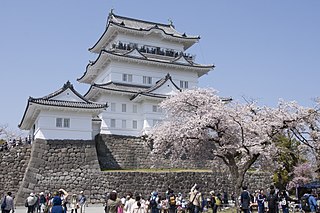 W
WThe third siege of Odawara occurred in 1590, and was the primary action in Toyotomi Hideyoshi's campaign to eliminate the Hōjō clan as a threat to his power. The months leading up to it saw hasty but major improvements in the defense of the castle, as Hideyoshi's intentions became clear. Thus, despite the overwhelming force brought to bear by Hideyoshi, the siege saw little actual fighting.
 W
WThe Battle of Okehazama took place in June 1560. In this battle, Oda Nobunaga defeated Imagawa Yoshimoto and established himself as one of the front-running warlords in the Sengoku period.
 W
WThe Battle of Sakainehara was fought in 1478 between the forces of Chiba Noritane (千葉孝胤) and the forces of Ōta Dōkan and Chiba Yoritane (千葉自胤). The battle is also sometimes referred to as the Sakainehara Campaign.
 W
WThe Invasion of Shikoku was a conflict of the Sengoku period of Japan fought between Toyotomi Hideyoshi and Chōsokabe Motochika on the island of Shikoku in 1585.
 W
WThe Battle of Shizugatake was a battle of the Sengoku period of Japan fought between Hashiba Hideyoshi and Shibata Katsuie in Shizugatake, Ōmi Province in May 1583. Katsuie supported Oda Nobutaka's claim as successor of Oda Nobunaga in a succession dispute within the Oda clan that benefitted Hideyoshi. Katsuie and Sakuma Morimasa attacked fortifications loyal to Hideyoshi at Shizugatake, defeating Nakagawa Kiyohide, but the other sieges stalled. Katsuie ordered Sakuma to retreat but was ignored, and Hideyoshi launched a surprise counterattack that routed Sakuma and forced him to retreat. Hideyoshi pursued Sakuma and successfully besieged Kitanosho Castle which led to the suicide of Katsuie and Oichi.
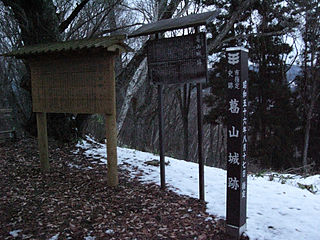 W
WThe Siege of Katsurayama in March 1557 was fought between the forces of the Japanese daimyō Takeda Shingen and Uesugi Kenshin as part of the Kawanakajima campaigns. Katsurayama castle was a strategically vital Uesugi stronghold in the contested Shinano Province and, when it was isolated from reinforcements due to late snow in early 1557, the Takeda clan used this opportunity to attack it. Although the castle garrison, consisting of the Ochiai clan and elements of the Murakami clan, defended Katsurayama furiously, the Takeda forces under Baba Nobuharu eventually stormed into the castle. Most of the garrison was killed in combat, while the families of the defenders committed mass suicide and the castle was burned to the ground.
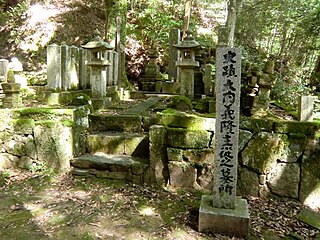 W
WThe Tainei-ji incident was a coup in September 1551 by Sue Takafusa against Ōuchi Yoshitaka, hegemon daimyō of western Japan, which ended in the latter's forced suicide in Tainei-ji, a temple in Nagato Province. The coup put an abrupt end to the prosperity of the Ōuchi clan, though they would rule western Japan in name for another six years under the figurehead Ōuchi Yoshinaga, who was not related to the Ōuchi by blood.
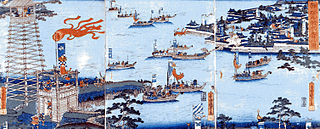 W
WIn the 1582 Siege of Takamatsu , Toyotomi Hideyoshi laid siege to Takamatsu Castle, which was controlled by the Mōri clan. He diverted a nearby river with dikes to surround and flood the castle. He also constructed towers on barges from which his gunmen could keep up a constant rate of fire and be unhindered themselves by the flooding.
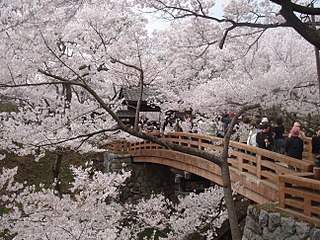 W
WThe 1545 siege of Takatō castle marked the first time Takatō had been besieged. Takeda Shingen, continuing his sweep through the Ima Valley of Shinano Province, seeking to take control of the entire province, defeated Takatō Yoritsugu, the castellan. Takatō had relied on support from his allies, Ogasawara Nagatoki and Tozawa Yorichika, who failed to aid in his defense.
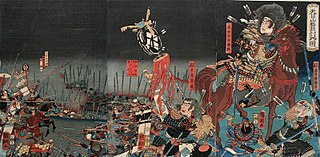 W
WThe 1582 Battle of Tenmokuzan in Japan, also known as the Battle of Toriibata, is regarded as the last stand of the Takeda clan. This was the final attempt by Takeda Katsuyori to resist the combined forces of Tokugawa Ieyasu and Oda Nobunaga, who had been campaigning against him for some time.
 W
WTenshō Iga War is the name of two invasions of Iga province by the Oda clan during the Sengoku period. The province was conquered by Oda Nobunaga in 1581 after an unsuccessful attempt in 1579 by his son Oda Nobukatsu. The names of the wars are derived from the Tenshō era name (1573–1592) in which they occurred. Other names for the campaign include "The Attack on Iga" or "Pacification of Iga" .
 W
WThe sieges of Toishi castle took place during Takeda Shingen's campaign to take over Shinano Province. His army, led by Sanada Yukitaka, began sieging the castle in 1550. The defending lord, Murakami Yoshikiyo, held out until the following year, but his garrison suffered over 1000 casualties, and was ultimately forced to surrender.